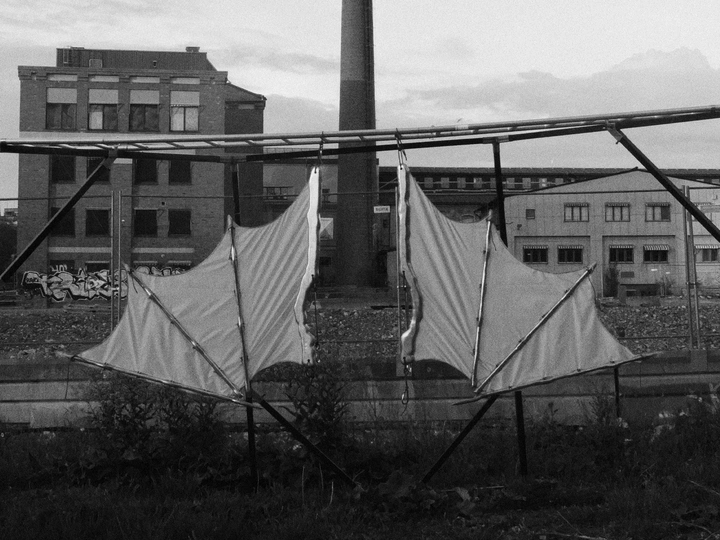(em)Bodied Animal Training

Federico Godino
Federico Godino and Natalie Blom are architects, artists, and researchers based between Milan and Stockholm. They met at The Royal Institute of Art in Stockholm in 2023, where they discovered a shared interest in more-than-human perspectives in urban environments, with a focus on sites in transformation, abandonment, and redevelopment. Together, whilst participating in the postmaster programme Of Public Interest (OPI) Lab, they explored artistic and architectural strategies of engaging with local communities, opening up questions about agency for other species within public space.
From this, Godino and Blom developed the project (em)Bodied Animal Training, combining fieldwork, embodied, performative design fiction and the creation of installations and sculptures that invite public interaction, challenging the human gaze and reimagining coexistence with other species. This project has been shown at the Tiny Park Festival hosted by The Royal Arts Academy in Stockholm and at the exhibition “Making Kin” at BASE during Milan Design Week 2025.
Federico Godino’s practice is focused on narrative formats questioning the relation between author, public and context. He’s consultant to Italian and international design and research offices including Stefano Boeri Architetti and Koozarch. He curated Landscapes for Holidays, a two year festival organised by the Italian Ministry of Culture in San Terenzo, Italy. His video research ”Cobalt Blue” was shown in the Climate Wunderkammer at the 2023 Venice Architecture Biennale.
Natalie Blom is interested in how artistic and architectural strategies can cultivate care and intimacy with local ecologies. Natalie is a co-founder of the collective Garden Loops, a research based artistic practice exploring themes of ecology, posthumanism, and foodsystems. Garden Loops work has been exhibited at Färgfabriken, Stockholm (2024), Konstepidemien, Gothenburg (2025), and Göteborgs Konsthall, Gothenburg (2025).
(em)Bodied Animal Training is an ongoing project by Godino and Blom that aims, through architectural research methods and cross-disciplinary collaborations, to re-understand urbanity as a landscape for multi-species coexistence.
The project started in 2023 emerging from fieldwork in synergy with local and public organisations, conducting extensive mapping of non-human habitats; in Milan they collaborated with the local WWF Bat-Desk to locate bat-nests within the city, and in Stockholm they worked with The Swedish University of Agricultural Sciences and their public database to map dwellings of mammals, birds, bats, amphibians and insects on an abandoned industrial site.
This research has informed a series of speculative, performative installations that explore how humans can physically shift their perspective—inhabiting the position of a bunny, a smooth newt, or a bat. By shifting the gaze between human and non-human, the project challenges our concept of public space, asking how we might care for all beings inhabiting the city.
For LINA, Godino and Blom propose to expand their research by creating a catalogue of multi-species habitats within urban areas, documenting their spatial and architectural qualities and conditions. Through cross-disciplinary collaborations with local and public initiatives and experts, they aim to translate existing knowledge from biologists and ecologists into an architectural language—positioning the issue of multi-species habitats as a task for architects and urban planners as well.
Through research, archiving, design interventions, roundtables, workshops, dissemination events, the project seeks to make visible the tensions between infrastructures and ecological dynamics, raising questions about local issues such as land consumption, environmental fragmentation, and urban transformation processes. Simultaneously, it aims to explore how human and more-than-human agents can collaborate in the shared definition of public space.